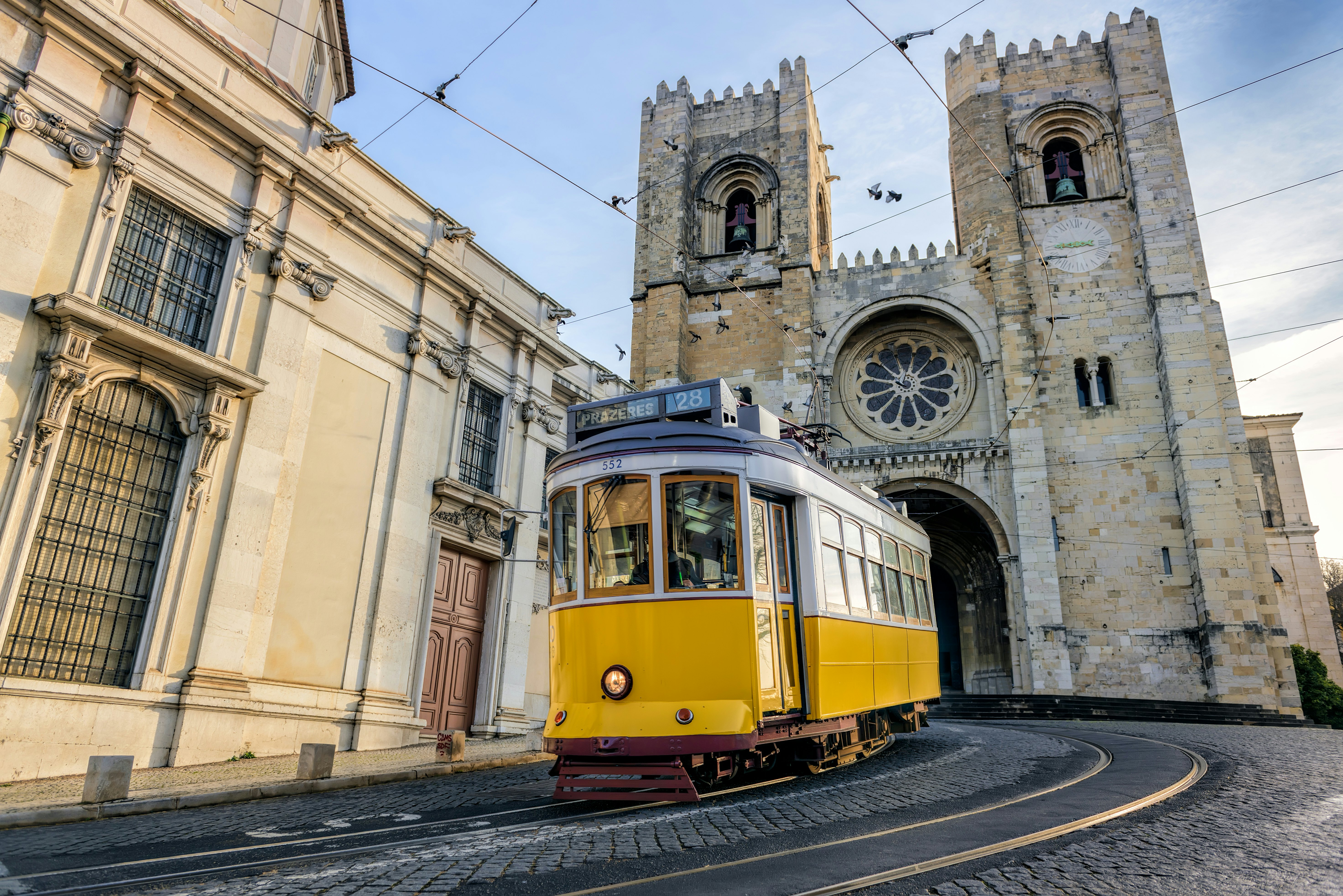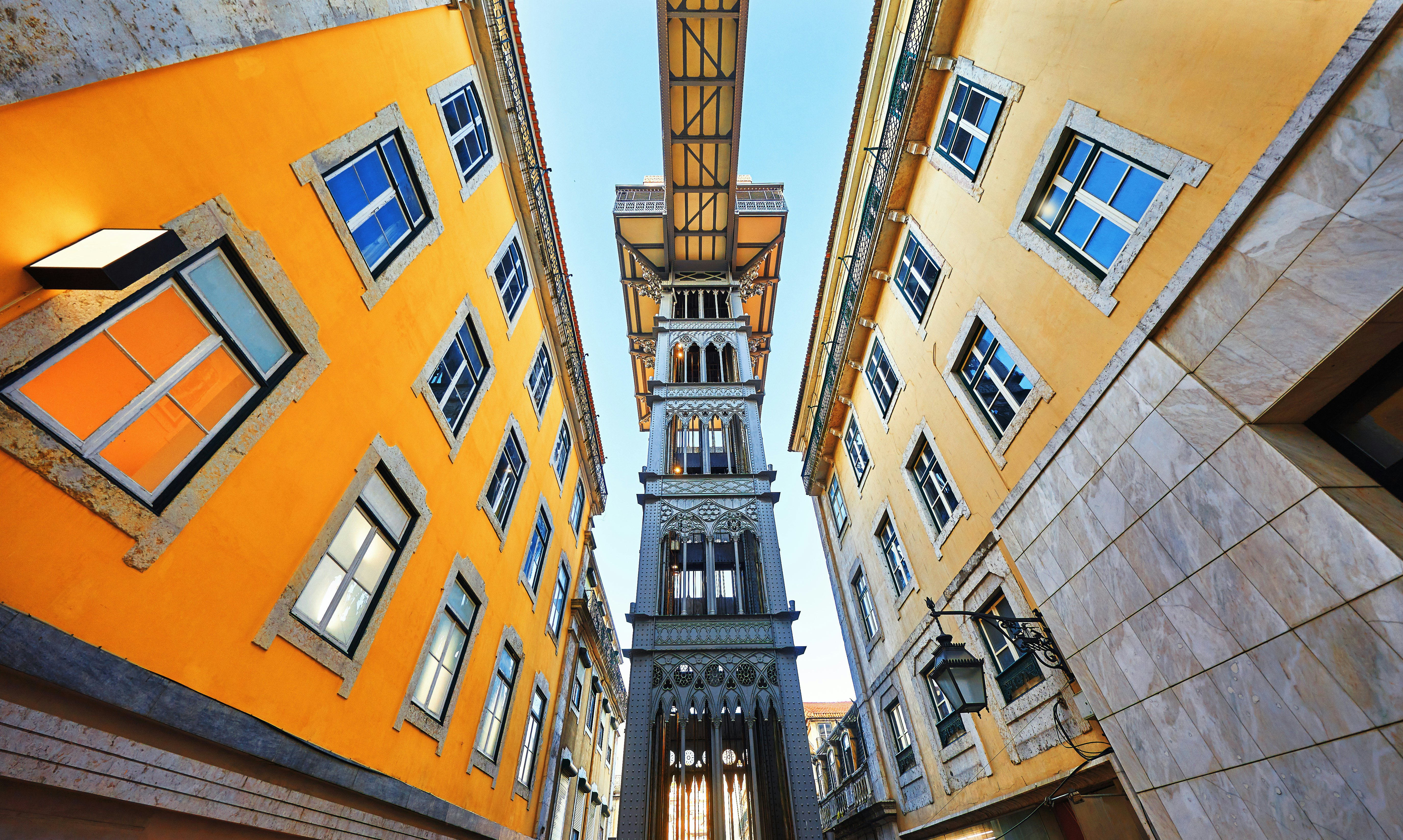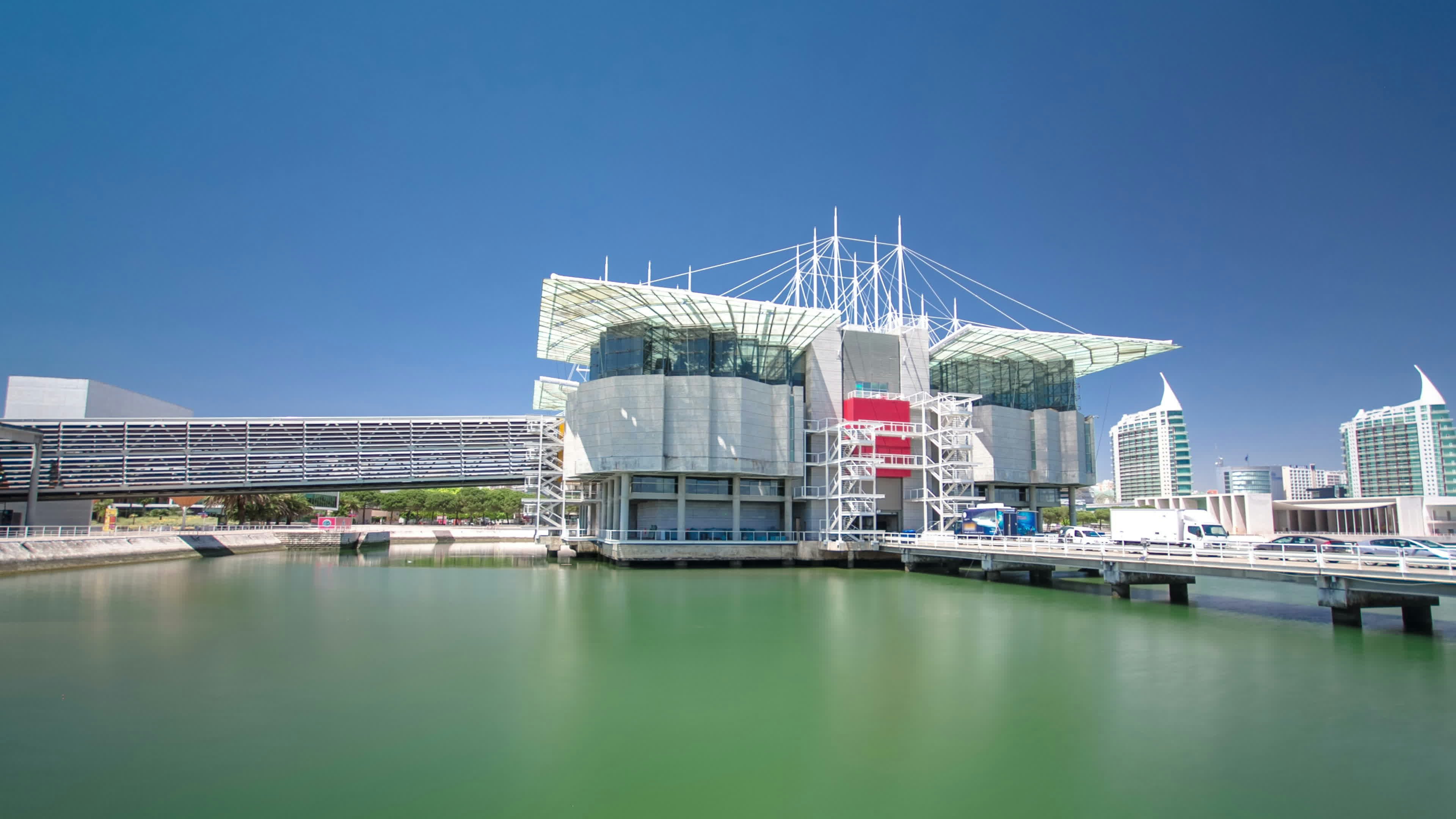
Bica funicular in Lisbon. Kerry Murray for Lonely Planet
Despite all of its hills and cobblestones, Lisbon is an easy city to navigate. For those without mobility issues, exploring on foot lets you wander through neighborhoods to find cafés and food like a local.
And Lisbon's impressive and intuitive system of Lisbon's buses, trams and suburban trains, along with an efficient Metro, makes it easy to travel between major points of interest. To conquer the famous seven hills of Lisbon, you can rely on funiculars and elevators – the city's most iconic forms of transportation. Or take a low-cost city tour on a historic tram.
Here are the best ways to get around Lisbon.


Walk to explore individual neighborhoods
Navigating the maze of narrow and hilly streets, courtyards and staircases in Alfama, Mouraria and Madragoa can be a challenge in the summer heat, but the experience tops most visitors’ must-do lists. Remember that flat, riverside neighborhoods such as Baixa, Cais do Sodré, Belém and Oriente are more manageable and just as picturesque.
The black-and-white patterns of the city's calçada portuguesa (Portuguese pavement) are one of Lisbon’s calling cards, but the pavment is not the most walking-friendly surface when it rains. Keep in mind that wet cobblestones can become slippery and are especially treacherous when making steep, downhill strides.
Ride public transport with the navegante occasional card
The navegante occasional card costs €0.50 (US$.60) and is available at vending machines and ticket offices at Metro, train and boat stations. The same travel card allows access to the Metro and all buses, trains, boats and trams serving Lisbon and neighboring cities. You can use the card for one year, top it up with credit and then swipe it over the sensor to pay on public transport – this is known locally as "zapping."
If you plan to use public transit a lot in one day, add a 24-hour ticket to your navegante occasional card, making sure to buy the right combination for all the types of transport you need. The simplest combination – known as Carris/Metro – lets you travel using the same ticket on buses, trams, elevators, funiculars and the Metro for €7 (US$8).

Navigate the city on Metro
Lisbon's efficient Metro network has four lines: the Red Line (serving the airport), Blue Line (Baixa and Chiado), Green Line (Mouraria and Alvalade) and Yellow Line (Saldanha and Campo Pequeno). The Red Line intersects with the other three lines, making it easy to interchange between them.
Metro is a great way to reach points of interest farther from the city center such as Lisbon Zoo (Sete Rios), Museu Calouste Gulbenkian (São Sebastião) and Parque das Nações (Oriente). Keep in mind that Metro doesn't run 24/7; there's a break in services from 1am to 6:30am.
CityMapper is the best map and public transport app for travelers to plan routes. There are other third-party and government apps, but they aren’t updated as often and don’t work as well.
Take buses at off hours
Buses can get crowded because they're one of the forms of public transportation used most frequently by locals. If you can, avoid riding buses during rush hour, when passengers are bound to be packed in as tightly as the city’s famous sardines.
Buses 728 (Oriente–Belém), 714 (Praça da Figueira–Belém) and 737 (Praça da Figueira–Castelo) are all useful routes for visitors to Lisbon, serving areas with the most attractions, particularly Belém, Parque das Nações and the historical neighborhoods of Mouraria and Alfama.

Play tourist on historic trams
Everyone knows about Tram 28E, which weaves an atmospheric path through the historic neighborhoods of Mouraria, Alfama and Graça, but you can hop on any of the other old trams for a similarly rewarding experience. Recommended routes include the 12E (Martim Moniz), 18E (Cais do Sodré–Ajuda), 24E (Praça Luís de Camões–Campolide) and 25E (Praça da Figueira–Campo de Ourique). Bigger modern trams run on route 15E, connecting Praça da Figueira to Belém; this route is often used by tourists on their way to Mosteiro dos Jerónimos and Torre de Belém.
While the rickety, mustard-yellow trams are full of character, they're more of a travel experience than a practical way to get around Lisbon. They're not exactly comfortable, plus they don't cover large areas of the city and often get stuck behind poorly parked cars during rush hour.

Ride funiculars and elevators up hills
Three funiculars and one historic elevator have been helping city-dwellers dodge Lisbon's uphill climbs since the early 1900s. All four are numbered, but locals refer to them by the names of the streets they ride on. Glória (51E) connects Restauradores to Bairro Alto; Lavra (52E) links Baixa and Jardim do Torel; Bica (53E) connects Cais do Sodré to Bairro Alto; and the Santa Justa elevator (54E) connects Baixa to Largo do Carmo in Chiado. You can buy tickets on board or use a navegante occasional card.
Cross the Tagus by boat
Five boat routes connect the two sides of the Tagus River, and taking a boat is the fastest, cheapest and easiest way to get to the south bank. Boats to Barreiro depart from Terreiro do Paço, you can catch boats to Montijo, Seixal and Cacilhas from the Cais do Sodré boat station. From Belém, you can reach Trafaria and Porto Brandão by boat.

Take the train to outer neighborhoods like Belém and Oriente
Suburban trains on the Cascais Line depart from Cais do Sodré every 20 to 30 minutes. The journey to Belém takes less than 10 minutes, which is often less than it takes by tram, bus or taxi. To reach the eastern side of the city, catch the Azambuja Line train from Santa Apolónia to Oriente Station – a stress-free trip of eight minutes.

Ride a bike or scooter along the river
Lisbon's city planners have put a lot of effort into increasing the number of cycle paths. Drivers are still not used to sharing the road, however, so it’s probably best to stay on riverside paths away from the cars if you don't have experience navigating rogue traffic while on two wheels.
To find a bike rental, download Gira, Lisbon City Council’s official bike-sharing app, which is widely used by locals and tourists and has dozens of bike stations around the city center. The Daily Pass gets you the first 45-minute ride for free, with a charge of €2 (US$2.30) for the next 45 minutes. You can also rent e-bikes and scooters through Lime, Bird and Bolt.
Use taxis or rideshare to explore beyond the city center
Grabbing a cab is a good option for longer journeys and for getting to and from the airport. Taxis in Lisbon are easy to identify: they're black vehicles with a green roof. They all run on meters, which are immediately turned on once you get in.
Language can sometimes be a barrier with taxi drivers, and service standards can be disappointing. Taxi drivers are required to issue a receipt at the end of any ride, whether you ask for one or not. Some taxis take card payments, but not all, so it’s best to carry cash.
Ridesharing apps are used widely in Lisbon; Uber, Bolt and FREE NOW are all popular options. Using these app-based services is cheaper than taking a conventional cab and quicker than getting on a bus to reach the far eastern (Oriente) and western (Belém) sides of the city. But not all drivers are familiar with the layout of the city. By law, all rideshare vehicles are required to display a sticker on the windshield with the letters TVDE.

Avoid driving unless necessary
Only drive in Lisbon if you need to cover a lot of ground in a short time or if you or those you are traveling with have reduced mobility. Like any densely packed city, Lisbon has traffic jams and roadwork, but the Portuguese penchant for double parking with blinkers on is even more of a patience test. The shortage of parking is also an issue, particularly on weekdays, when commuters take every available spot in busy neighborhoods like Baixa, Chiado and Mouraria.
Accessible transportation in Lisbon
Lisbon is not a very accessible city, unfortunately, and most challenges won’t change in the near future. The historic calçada portuguesa sidewalks are uneven and poorly maintained, and trams squeeze their way along narrow streets, further reducing space for people with impaired mobility. Travelers with disabilities may find it difficult to ride the narrow and rampless funiculars, and Lisbon’s trams are also tricky for people with reduced mobility. (Tram 15E is the only service with accessible boarding). Most buses aren’t equipped to accommodate wheelchair users, and only some metro stations are equipped with elevators.
Plan with a local




